How to grow an apricot from a stone
Propagation of apricot trees by seeds is a rather interesting and effective way to grow the required number of seedlings. This option of growing apricots actually really helps in solving the problem to save on the purchase of expensive seedlings and get a plant that is well adapted to the local climate, hardy and viable, and also surpasses its parents in taste and fruit size. Of course, this is not the fastest way, but it is not the most difficult and costly one either.
We will talk about how to choose the seeds with the highest germination energy, determine the timing and method of planting, and care for seedlings in the open field in our article.

Content
Is it possible to grow a new tree from an apricot seed and will it bear fruit?
Answer of course positive (for both questions), but to do this, you need to know some of the intricacies of the growing process.
Note! It should be borne in mind that an apricot planted with a stone will begin to bear fruit only after 6-7 years.
If after this time of flowering is still not observed, furrowing of the bark or similar procedures should be carried out, for example, as in the case with the lack of flowering in apple trees.
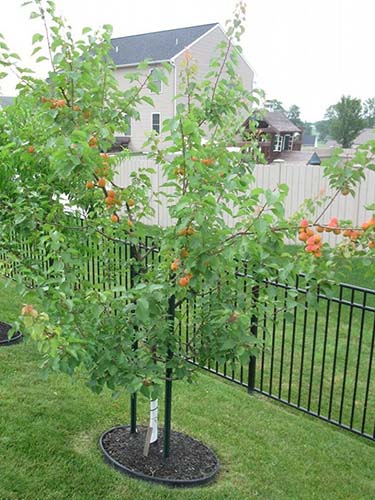
It is also worth paying attention to the fact that this method of reproduction of apricot trees great only for the wild... The fact is that cultivars from seeds cannot be grown, since the tree has a diploid set of chromosomes, and the seeds have a haploid set. Therefore, wild game seedlings, as a rule, used more often as a stock.
Important! About, how to plant apricot, described in detail here.
But it is possible that a beautiful tree with very tasty and juicy fruits can grow from an apricot kernel. In the next video, the author talks about the successful experience of planting apricots with seeds, when in the end he did not have to graft anything.
Video: fruiting apricots grown from seeds
By the way! The main advantage of growing apricot from a stone is the fact that such a tree will be fully adapted to your climatic characteristics, that is, it will not be afraid of adversity and adverse weather effects in your region.
Which apricot pits are suitable for planting
Despite the fact that the probability of transferring maternal properties with this method of reproduction is impossible, for planting, you should still choose only the best apricots, namely: they should be sweet, and not only the pulp itself (besides, it should be well separated from the stone), but also the inner nucleoli (at least they should not be bitter).
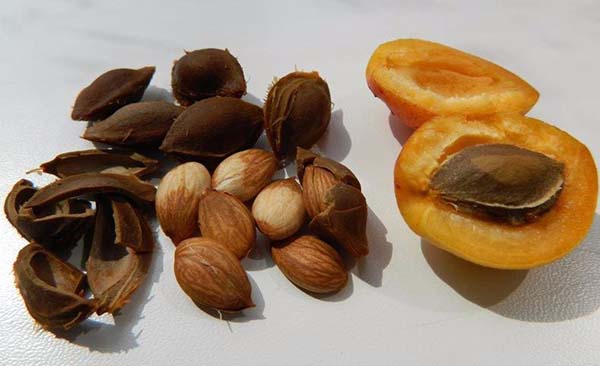
Advice! For planting, you should take only fresh seeds, all the more you should not use apricot seeds from compote (boiled), since they can hardly sprout.
When to plant apricot seeds: in spring or autumn
Before deciding on the method and timing of planting an apricot kernel in the ground (in a pot or on a garden bed), it is worth knowing one simple truth (law): until the bone freezes, that is, it does not pass stratification, it will not rise.
If you decide to plant an apricot with a bone in the spring, then lay on stratification (artificial) should be already in the month of January-February, so that by April-May the seedling will give the first roots.
As for planting apricot pits in the fall, then, for example, in the middle lane (Moscow region) they are planted directly in the open ground in October-November, and they can be planted even in frost, it does not matter. They will hatch anyway only in the spring (after the snow melts), that is, after natural stratification.

By the way! According to the experience of some gardeners, it is believed that if seeds are germinated and planted in the spring, then they will give a higher growth than the seeds simply thrown into open ground in the fall (for natural stratification).
Video: how to grow a new tree from an apricot seed
Growing apricot from stone in the open field: planting in the fall and care
To grow an apricot from a stone, before (in summer) you will need to collect the seeds of the fallen and the most delicious fruits, put them on a plate, dry them slightly, for example in the kitchen or in the room (but not the sun), and then put them in the refrigerator, so that later in October -November, plant in the ground.
Video: planting apricot pits in the fall
Landing place
If you immediately want to choose the best site for growing apricots, then you need to choose a quiet southern place (open and sunny), protected from the north wind, for example, by a fence or some kind of outbuildings.
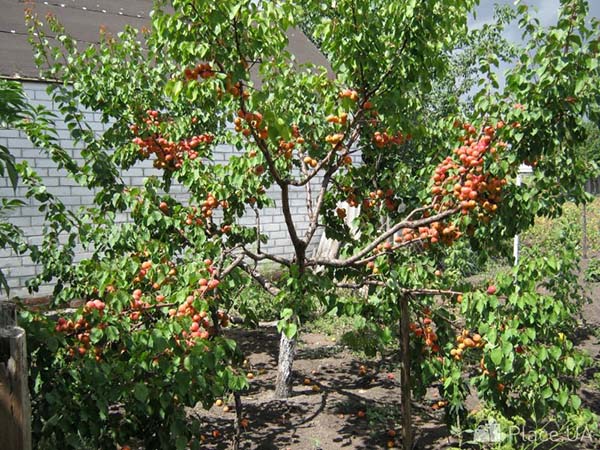
Landing in the ground
Step-by-step instructions for planting apricot seeds in open ground in the fall:
- Choose a suitable spot in the garden.
- Prepare a trench or planting holes, before digging up the ground and adding humus or peat, as well as sand into it (it is better to do this in advance, while the ground is not frozen yet).
- Planting depth of apricot pits is 5-6 centimeters.
- The distance between the seedlings in the trench can be maintained somewhere in the 15-20 centimeters.

- Sprinkle with earth. Just in case, you can mulch with pine needles (coniferous litter).
- Before or after some time, it is imperative to take the necessary measures to protect against garden pests, since mice and ants really like to feast on bones.
- And in early spring it is necessary to cover them with something so that the rooks do not nibble.
Note! Read detailed articles on our website on how to deal with ants and mice.
Video: growing apricots from a stone: planting seedlings in open ground - part 1
Care of apricot seedlings after planting seeds
As a rule, next year, in the spring, the first shoots will appear from the ground, and in May their height can reach 10-15 centimeters. Although it often happens that they may not ascend in the first year, but only in the second or third.
Further care consists in regular watering as the soil dries up.
Important! If in the first year the leaf plates are narrow and jagged, rather rough, then most likely you will not get good and large apricots in the future. However, there is nothing wrong with that, you can use this seedling as a rootstock, that is, you can successfully plant a cultivar on it.
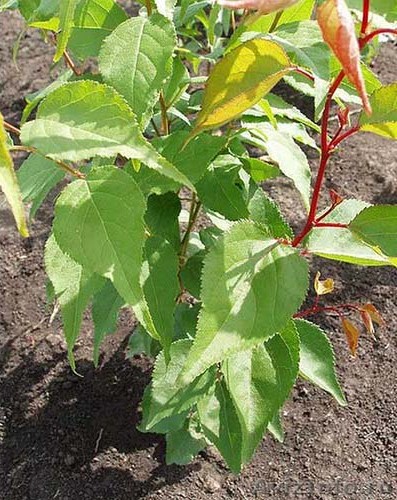
The biggest problem that gardeners face is that a lot of such seedlings (very young) freeze out in the very first winter. However, unfortunately, you will hardly be able to help here, although you can try to make a winter shelter (for example, cover with cut 5-liter plastic bottles). But in any case, natural selection must occur, which means that only the strongest seedlings will survive.
Video: growing apricots from the stone: seedlings in spring - part 2
Transplanting a young seedling to a new location
Advice! In general, it is recommended to plant an apricot with a bone immediately to a permanent place due to the peculiarities of its roots (a very powerful taproot grows), since each transplant delays the tree's entry into fruiting.

But if you planted many seeds at once in one place at a fairly close distance, then you will definitely need a transplant, although you can leave only the strongest seedlings, and remove the rest.
The transplant, as a rule, should be performed in the spring of next year, or you can wait until autumn.
Advice! In general, the transplant takes place according to the standard scheme, but after it, the crown should be cut in half (by 50%), otherwise the seedling will not survive, since the plant will need to direct all its forces towards rooting.
In the next video, the author shares the results of transplanting apricots planted with seeds.
Video: growing apricots from the stone: transplanted seedlings 2 years after planting - part 3
Growing an apricot from a stone at home and planting sprouted seedlings in spring
As mentioned earlier, with any method of cultivation, the apricot kernel must necessarily undergo stratification. So, when planting in spring, you must organize artificial conditions for her.
Step-by-step instructions for stratification of apricot pits at home:
- Soak the bones in water (for a day). Those that will sink to the bottom - the good ones, the ones that have surfaced - should be thrown away.

- Select a suitable container with a resealable lid.
- Then, in the container, mix the soaked bones with sand (you can also use vermiculite or sawdust), but so that they do not touch each other. Moreover, it is advisable to pre-calcine the sand in the oven (for disinfection).
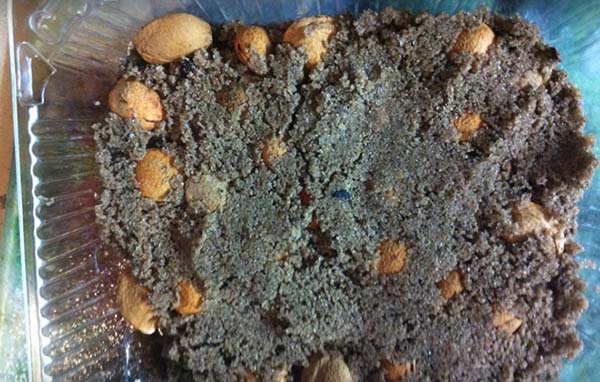
- Place the container in a cool place where the temperature is no higher than + 2-4 degrees (refrigerator or basement).
All you need to do during the stratification period is to periodically check the container so that no mold appears inside. If you notice the slightest signs, then it should be washed off immediately with a weak (light pink) solution of potassium permanganate. The sand should also not dry out, the environment should be constantly moist.
After about 3 months, the bones will hatch, and their roots will come out. Now containers with seedlings can already be moved to “real” conditions for adaptation, for example, to a closed gazebo. And in a week and a half, they will be planted in the garden.
Landing in open ground
The spring planting of the hatched apricot seed in the open ground is, in general, similar to the fall, but again there are some nuances. The step-by-step instruction looks like this:
- Decide on the best places on your site (this has already been discussed in the subsection "Landing site").
- Prepare the ground. It is best to prepare such a soil mixture: 2 parts of garden soil, 1 part of humus or peat, 1 part of river sand, and add a little perlite.
Important! It is very convenient to plant in special pallets, this will help you to greatly simplify further transplantation.

- Slightly deepen the seeds with the sprout down (1 centimeter) and sprinkle with earth.
- Cover to keep out pests.
Further care similar to that described earlier for autumn planting and growing characteristics.
Video: how to grow an apricot from a stone
Planting in a pot and growing at home
Planting sprouted apricot seeds in a pot is generally similar to planting in open ground, but there are several important nuances:
- The container should be taken deep, because the root system of the apricot is pivotal. For example, plastic 0.5 liter cups are perfect, in which drainage holes should be cut.
- At the bottom of the planting container, it is advisable to pour a small layer of expanded clay (drainage).
- It is not necessary to deepen the bones, it is enough that only the root is in the ground. Excessive deepening can provoke decay of the root collar.
- Then you should slightly moisten the surface of the earth and the bone itself.
- Cover with plastic wrap and remove the container in a dark and warm place.
- Until sprouts appear, the planting container should be periodically inspected in order to remove accumulated condensate from the film and open it for ventilation.
- As soon as the first shoots appear, the pot should be immediately rearranged to a bright and warm place, for example, to the southern or eastern window sill, or under phytolamps if you do not have a sunny window in your apartment. The recommended temperature is + 24-26 degrees.
- Water as needed.
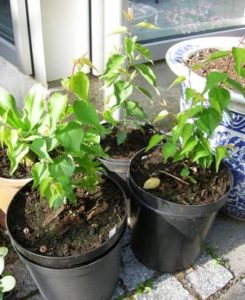
- As soon as the plant reaches a height of 20-30 centimeters, transplant it into the ground (only in spring).
By the way! Main advantage planting apricot pits and growing it at home in the fact that neither ants, nor mice, nor birds will eat and take away the seedling itself.
But there are very serious disadvantage - such seedlings (grown at home) take root noticeably worse in the open field, because from "childhood" they are not at all adapted to natural conditions. It's one thing if you live in the south, for example, in the Kuban (in the Krasnodar Territory), and quite another thing in the middle lane (Moscow region). This will most likely be a waste of time. In Siberia and the Urals - for sure.
Note! If it seemed to you that growing an apricot from a stone is too difficult, then just buy a seedling and plant it in your country house.
It is perfectly possible to want to have a lot of strong and viable apricot trees in your garden. In order to reduce material and physical costs, try growing apricots from seeds. Garden happiness will smile at you, if you choose the right seeds, correctly outline the planting dates and in the future you will fully take care of the seedlings in the open field.
Video: growing apricot from seeds - planting and transplanting a seedling to a permanent place


Gentlemen, if you are writing about vaccination, then do not confuse the scion with the stock. Error in one of the "Important" paragraphs. Because it might suggest incompetence.
Thanks a lot for the fix! You say one thing, think the second, and write the third ...